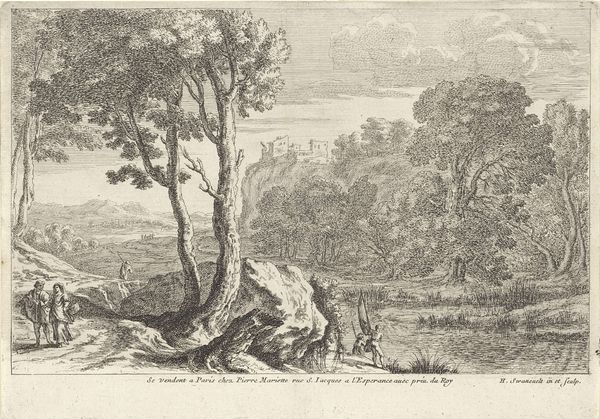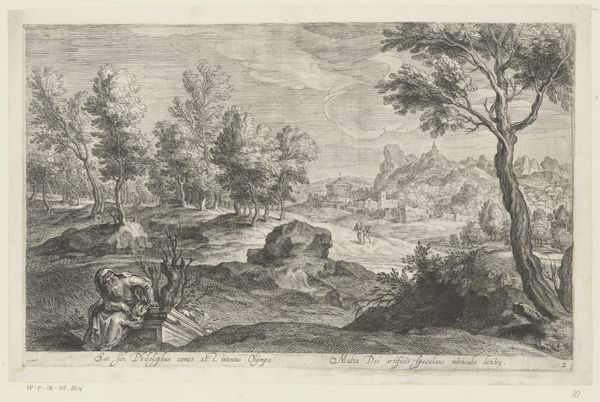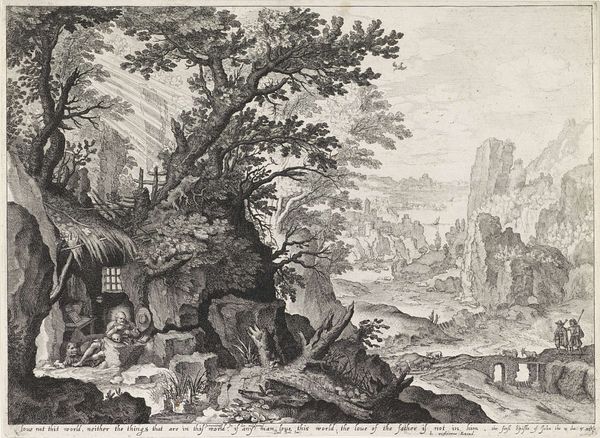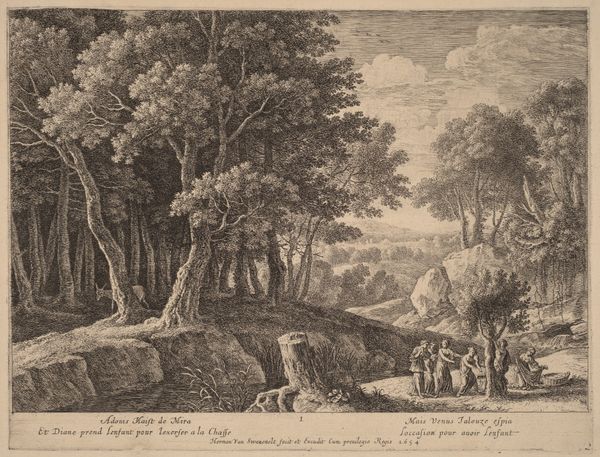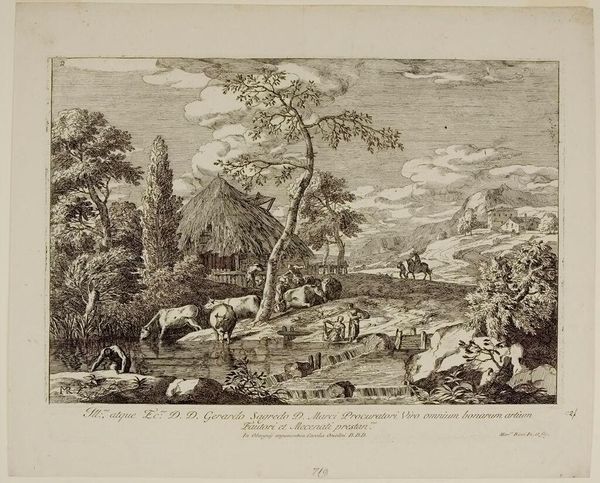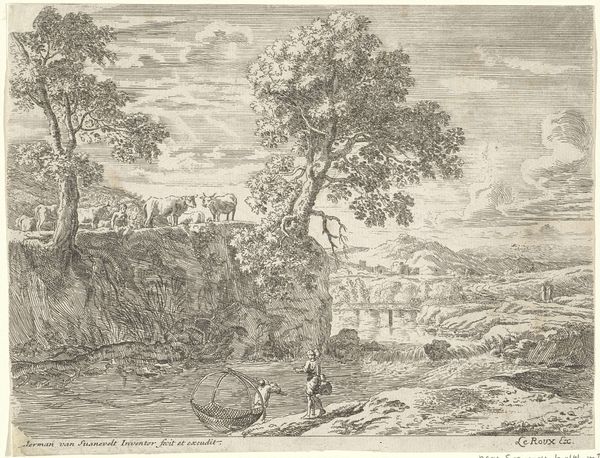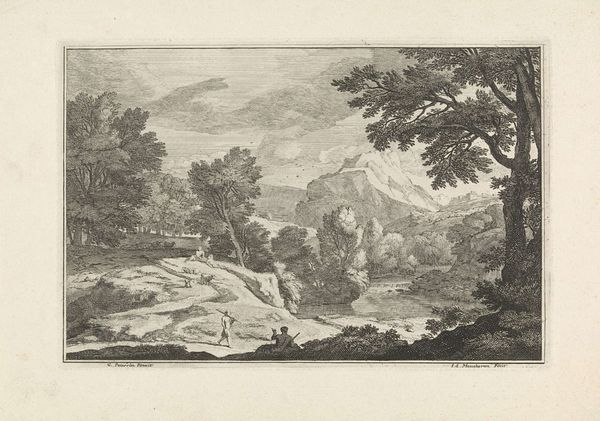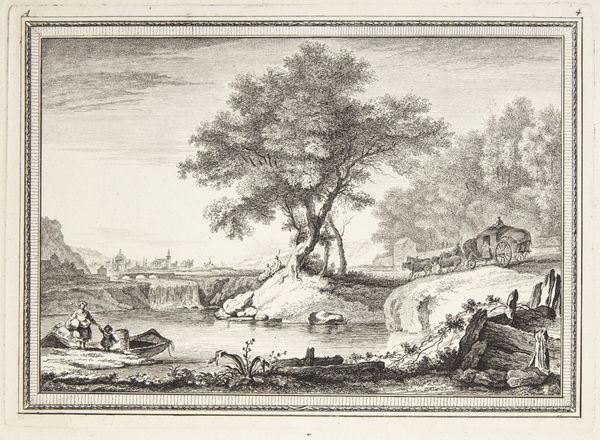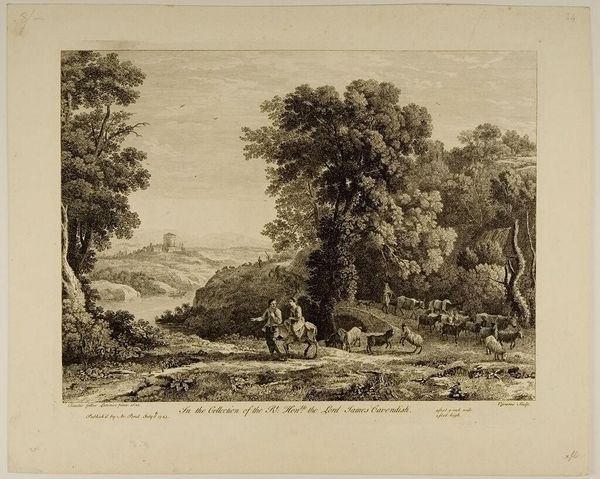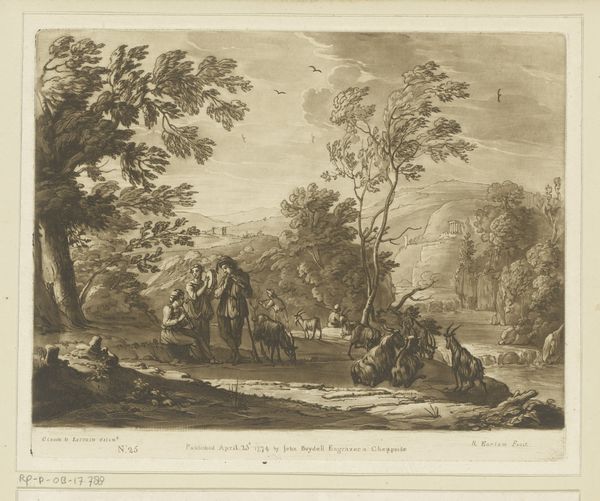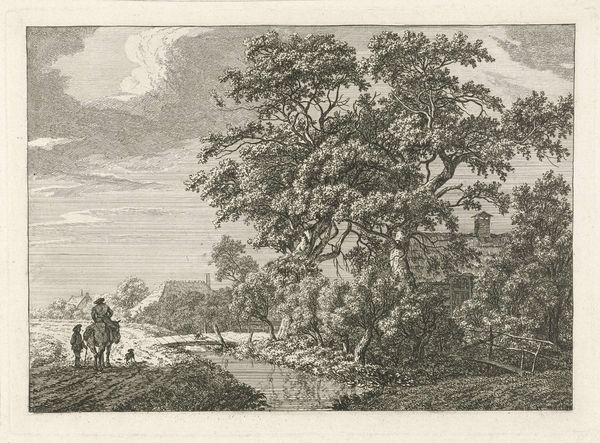
print, engraving
#
baroque
# print
#
dog
#
old engraving style
#
landscape
#
genre-painting
#
academic-art
#
engraving
Dimensions: height 421 mm, width 550 mm
Copyright: Rijks Museum: Open Domain
Curator: Immediately, I’m struck by the almost theatrical arrangement of figures within this landscape. It's meticulously crafted, isn't it? Editor: It is, quite deliberately. What we're looking at is Francesco Bartolozzi's "Landschap met rustende familie", dating back to 1760. It's an engraving, part of the academic-art movement. Curator: The family unit is central. A mother embracing her child while another figure extends their arm toward something in the distance—a boat perhaps? There's a dog, some sheep, suggesting an allegorical element for domesticity, maybe familial roles and values of that time. I’m wondering about the subtext surrounding women in these domestic settings; how does this piece support or challenge those existing patriarchal views? Editor: Those classical and pastoral images evoke innocence, a return to simple pleasures. Note the text on the lower left: “In rustic life are pleasures, which are pleased with little and close to nature”, and opposite, on the right “In the fresh and sincere love of the river the strong heat of the air is extinguished” -- these written details offer insight on sentimental ideals in academic-art about family, pleasure and nature’s balance. The landscape provides not only a backdrop but active symbolism. The presence of figures becomes the symbol of human interaction in contrast with the sublime dominance of the mountains. It shows how academic art was not immune to express some ideals of simple-living. Curator: Indeed, the figures exist within an almost idealized setting, but even so, I hesitate to dismiss the imagery entirely. It carries psychological meaning, the figures and shapes almost communicate values rooted deeply in cultural identity of their time. How we approach their cultural norms affect directly our personal perception of this art. Editor: Exactly! This kind of landscape and sentimental subject offers more than superficial prettiness. And I must add, even technically the engraving’s nuances and the detailed figures do reflect cultural memory for sentimental narratives! Curator: So while it certainly romanticizes rural life and the simplicity of family, that, in itself, speaks volumes about what was considered virtuous at the time. Editor: Absolutely. It invites us to critically examine societal expectations, not merely aesthetic appreciation.
Comments
No comments
Be the first to comment and join the conversation on the ultimate creative platform.
